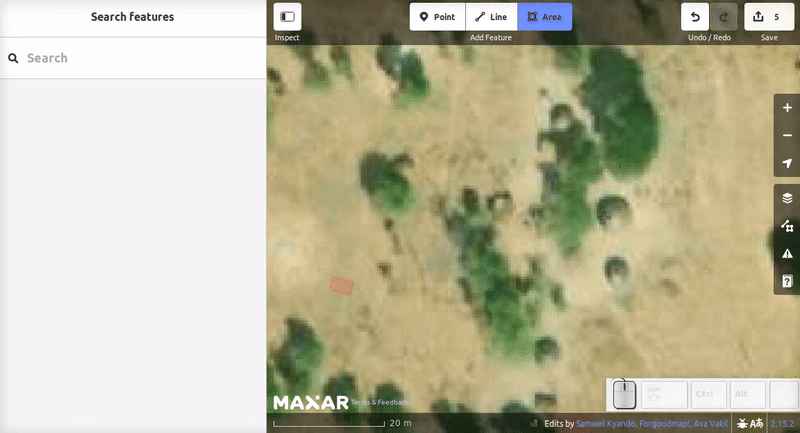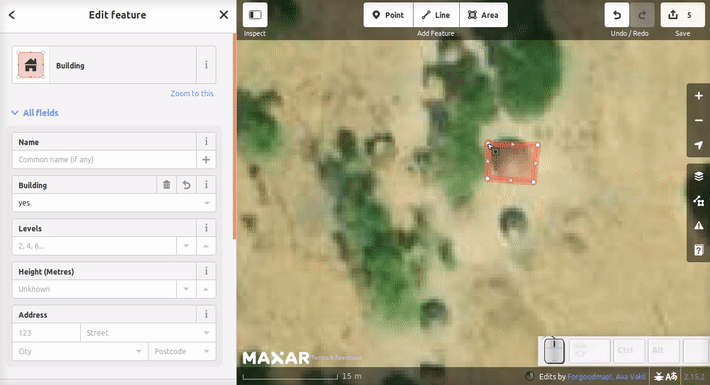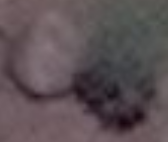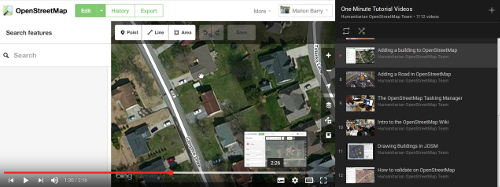- Other guides
- Beginner's guide
- JOSM - Detailed Editing
- Coordination
- Mapping with a SmartPhone, GPS or Paper
- OSM Data
- HOT Tips - Getting started for new mappers - iD editor
- Starting with a Tasking Manager - iD editor
- Aerial imagery & Alignment - iD editor
- Issues - iD editor
- Tracing rectangular buildings - iD editor
- Tracing round buildings - iD editor
- Saving - changeset comment & Task Manager finishing a square - iD editor
- Tagging - iD editor
- Copying, Pasting & Rotating - iD editor
- Other Resources
|
|
Tracing round buildings - iD editor
The Essentials
Points to note;
Building - converting square to round
If a building has been traced as rectangular, but you can see it should be round it is easy to convert to a round building;
IdentificationRound buildings are often found within a compound, and the buildings may be in clusters, or in isolation. It can be difficult to establish if you are looking at a round building or a bush or rock. Buildings are usually found near some means of access such as a path or track, although this can be difficult to see on very hard ground. The vegetation may be worn down by the passage of feet. In some parts of the world the buildings may be on the only dry land, and the access is by boat on a river or lake. There is normally a water source visible within 2 or 3 kilometres of any habitation, but in many parts of the world you do not see the water, but you do see more vegetation to indicate it must be there. In many places in the world it is easier to build a new village a short distance from the old one, leaving the old buildings to rot away and fall down - sometimes they are destroyed by fire. Look for shadows to help you decide what you are looking at. If all that is left is a round mark on the ground, it will have no shadow. If in doubt add it as a building.
Do your best - even the experts will disagree sometimes, and sometimes you just have to go there to see exactly what is really there. If in doubt add it as a building. Building TagsAs we are tagging buildings we have never visited and are not familiar with, the safest and recommended tagging scheme is building=yes which you can see on a correctly tagged building if scroll to the bottom of the tagging pane and click on All tags. See also
Was this chapter helpful?
Let us know and help us improve the guides!
|


 to undo your last change(s)
to undo your last change(s)


 Return to top of page
Return to top of page